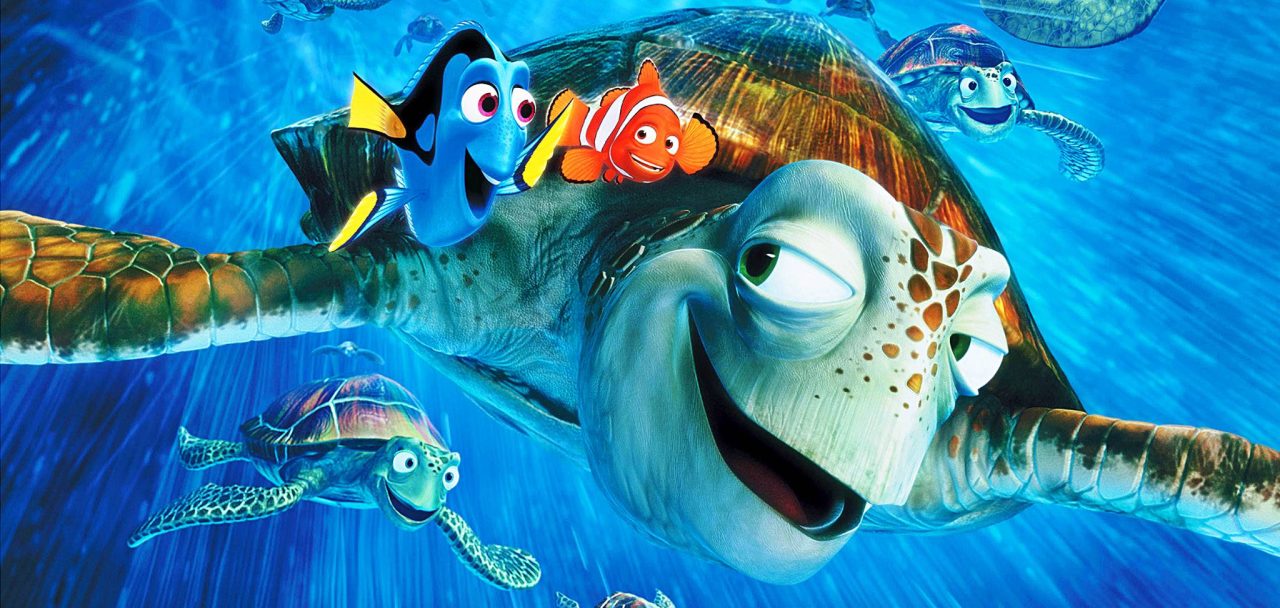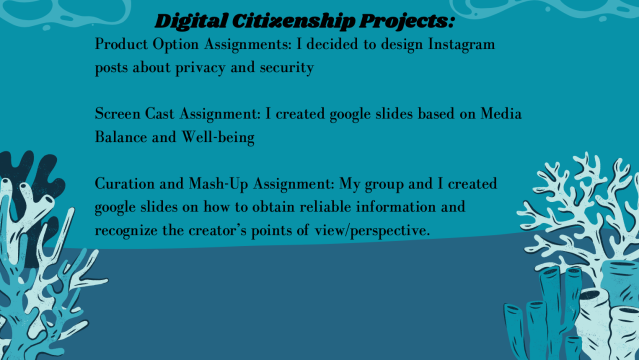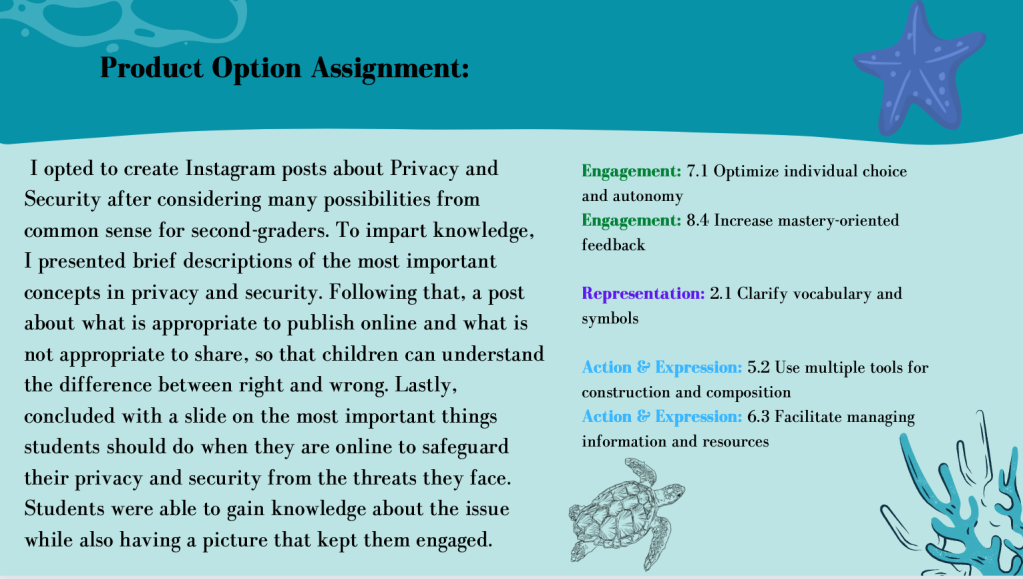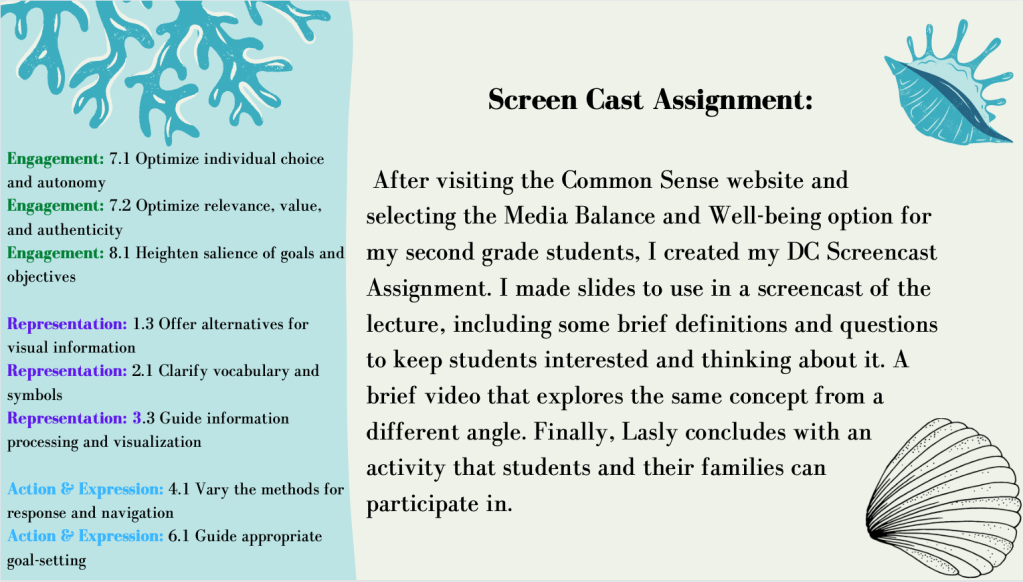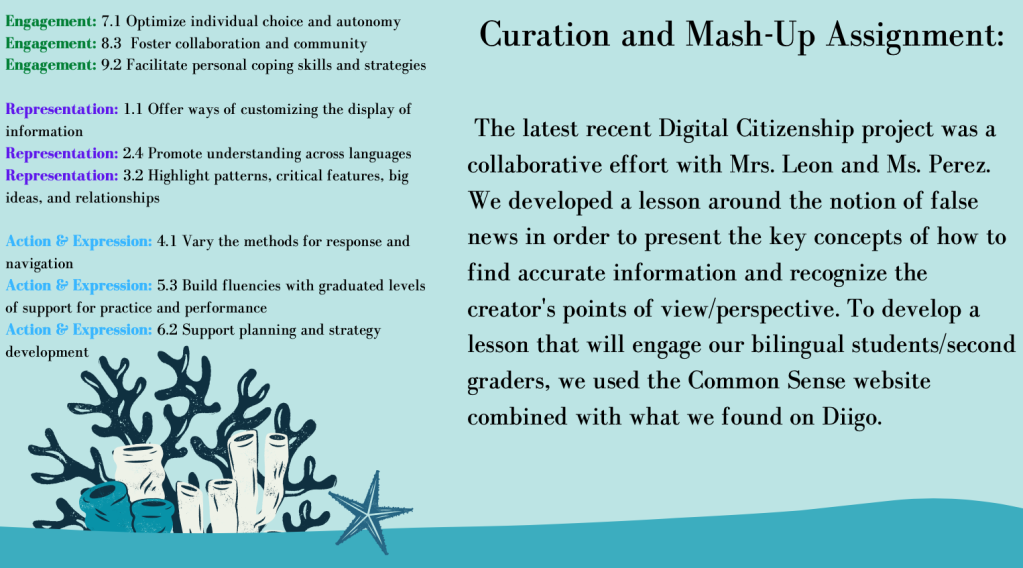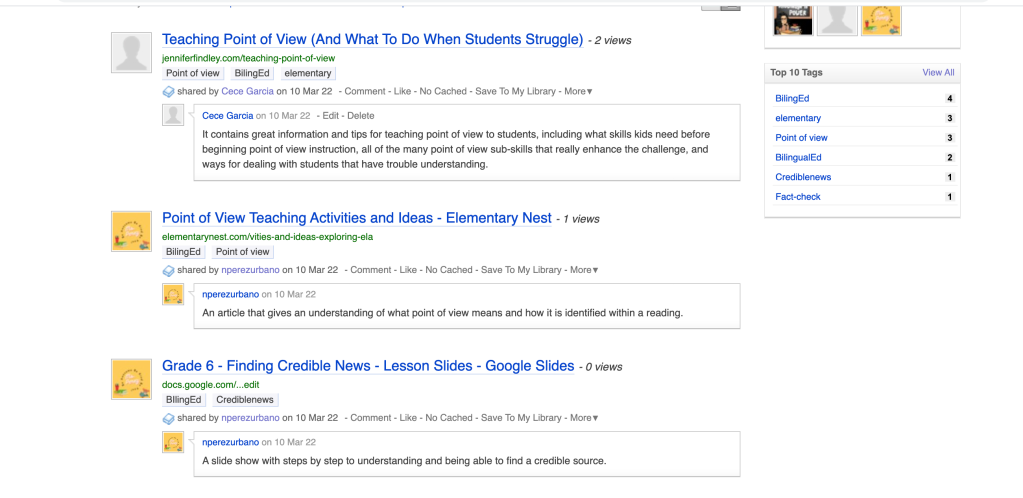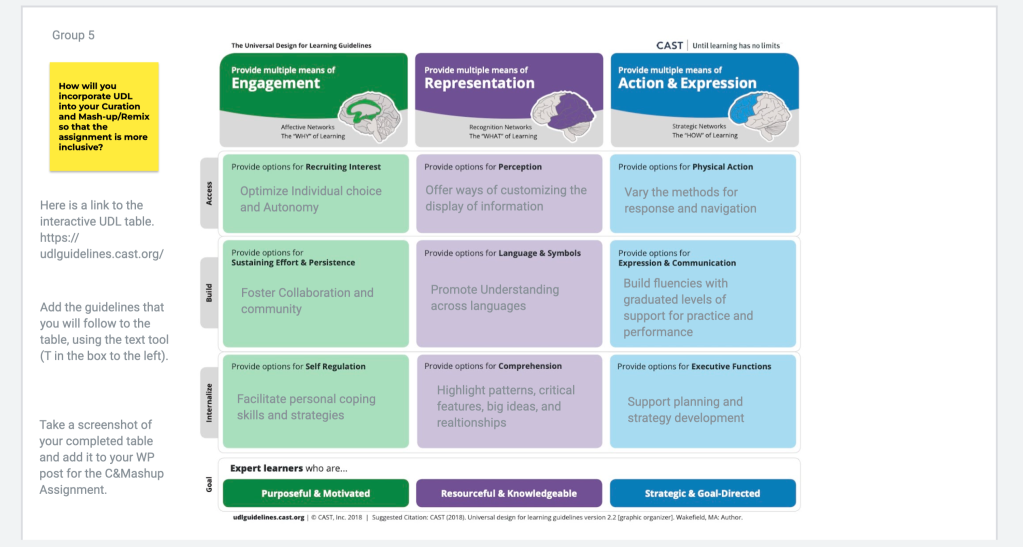What? Describe your project work, emphasizing your design choices and collaborative efforts.
I mostly concentrated on innovation, teamwork, and diversity. To develop our final design options, I started the LEP planning by looking for ideas for a maker space activity. Finding California Content-Based Standards that we wanted to work with was at first tough, but after I started putting ideas together, things began to fall into place. The procedure was difficult since I was unsure whether my concept was correct or incorrect at times.
I developed my project using the California Content-Based Standard, the ISTE standard, and the UDL principles. While designing in-person activities for my maker spaces was pretty simple, I also wanted to give people the option of doing it at home to expand their creativity.
Derived from empirical insights on how people learn, this framework aims to improve and optimize teaching and learning. What I’ve learnt by creating LEP projects utilizing a variety of platforms, including YouTube, Screencastify, Google Slides, Moto Audio, Word Press, and a range of other tools. Each of the instruments I used allowed me to be creative with my ideas and create a one-of-a-kind final product. Although it appears to be simple to use, completing the task is challenging. I established a goal for myself to learn how to use new platforms and integrate my ideas.
So What? – As you look back upon your work and your group’s interactions (if applicable), what difference does it all make? What impact or meaning does this work and the way that your group did or did not function hold, and why should it matter to others?
This work made me realize that creating a lesson plan or even an activity for students takes time. I feel that I gained the knowledge of the work process of how to create an activity that can make an impact on students’ learning and has to be in steps to provide a better approach. I believe it matters because it provides an idea of incorporating different learning styles into the classroom.
Now What? Describe what’s in store for the future given what you’ve learned from this experience and your collaborative efforts; outline what you will do to continue your professional development in light of this learning.
This helped create venues and learning activities that function in both in-person and at-home settings. I will continue to develop learning environments for students that can be reproduced at home so that they may learn the same standards while still participating in hands-on activities. I did not have an idea of a maker space, but after learning about their impact on critical thinking abilities, I’m going to try to incorporate them into my future classroom. Being open-minded and allowing future students to expand their creativity.
I am willing to make adjustments along the road. I’ll review the UDL criteria once again to ensure that I grow more content and confidence in my future work. It will be useful to have it to create activities and to learn from this experience so that I may continue to create various sorts of media to educate my future students. It will allow me to be more confident in my professional life.

